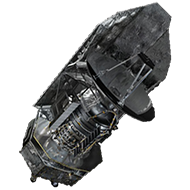| Name | About Us |
|---|---|
| Nathan Bourne University of Nottinghamppxnb1 AT nottingham.ac.uk | I am a PhD student working on the Herschel-ATLAS survey. My current research focuses on the statistical properties of large samples of galaxies selected from the Galaxy and Mass Assembly (GAMA) Survey of the low-redshift universe. Using the technique of stacking I hope to understand how the far-infrared emission from dust depends upon other properties of galaxies such as their mass, age and star-formation rate. This is a good way to get an idea of the ‘big picture’ of how galaxies evolved through the history of the universe. |
| Loretta Dunne University of Nottinghamloretta DOT dunne AT nottingham.ac.uk0115 951 51 32 | My research is ‘Cool Astronomy’ – looking at cold clouds of dust and gas in both our own Galaxy and very distant galaxies to see what we can learn about galaxy evolution. I am involved in surveys to study these galaxies, and also to make a benchmark study of the dust in local galaxies so that we can understand close at hand what may be going on in the distant Universe. I am co-leading the Herschel-ATLAS survey with Steve Eales and am part of the team looking at dusty stars. |
| Steve Maddox University of Nottinghamsteve DOT maddox AT nottingham.ac.uk | I have worked on several galaxy surveys, in particular the 2dF Galaxy Redshift Survey and now the Dark Energy Survey. My contributions have been in the design and statistical analysis of the surveys, and my particular interests are in determining the distribution of galaxy properties and measuring how galaxies cluster together. In Herschel-ATLAS I am leading the team responsible for source extraction and am also head of the Working Group for Large-Scale Structure studies. |
| Emma Rigby University of Nottingamemma DOT rigby AT nottingham.ac.uk | I’m a Post-doc involved in cataloguing the sources detected by the Herschel-ATLAS survey. To get the most information from the data we need to understand any biases that might have been introduced by the telescope or our source extraction techniques – I use simulations of the sky to investigate these effects and determine how accurate our catalogues are. I’m also interested in radio galaxies (a subset of active galactic nuclei or AGN, with giant radio-emitting jets), and in particular how their populations have changed throughout the history of the Universe. Herschel tells me how dusty these galaxies are, which is an important piece of information for understanding what triggered their radio activity. |
| Kate Rowlands University of Nottinghamppxkr AT nottingham.ac.uk | I am a PhD student working on the submillimetre properties of local galaxies. By looking at the spectral energy distributions of each galaxy, we can determine properties such as star-formation rate and dust mass. I am interested in how these properties vary over time, so I can find out where the dust comes from and where it goes. |
| Dan Smith University of Nottinghamdan DOT smith AT nottingham.ac.uk | I’m a post-doc working on identifying and studying the optical counterparts to the thousands of galaxies that the Herschel-ATLAS survey is discovering. Whilst the far-infrared wavelengths at which Herschel observes can tell us about the dust and gas contents of these galaxies, the optical wavelengths enable us to study the stars within them. My research involves putting this information together, enabling us to build up a picture of the properties of thousands of these distant galaxies in hitherto unprecedented detail, and ultimately to understand where they fit in to our understanding of galaxy formation and evolution over cosmic time. |
